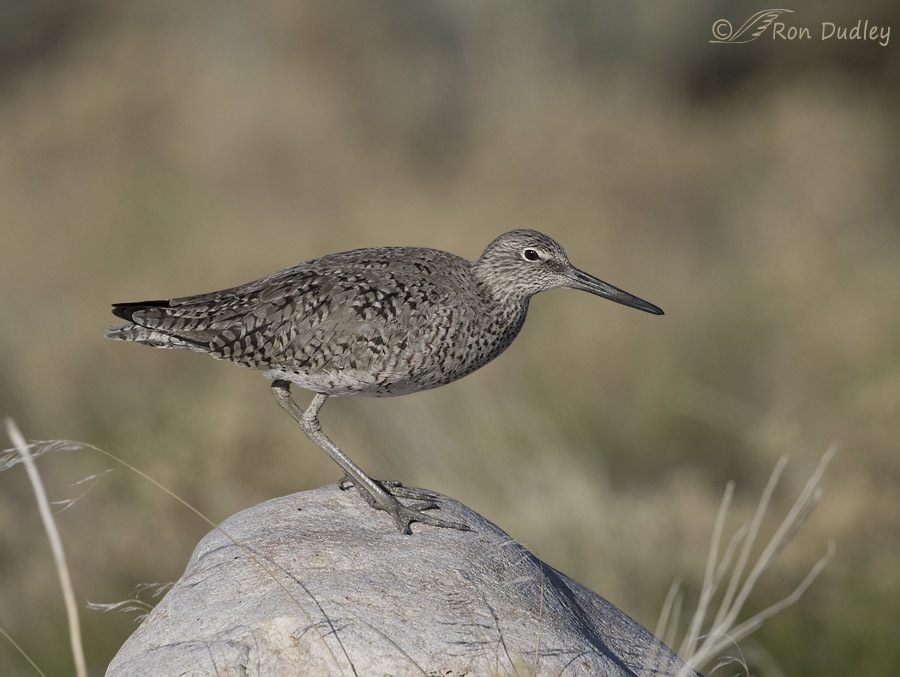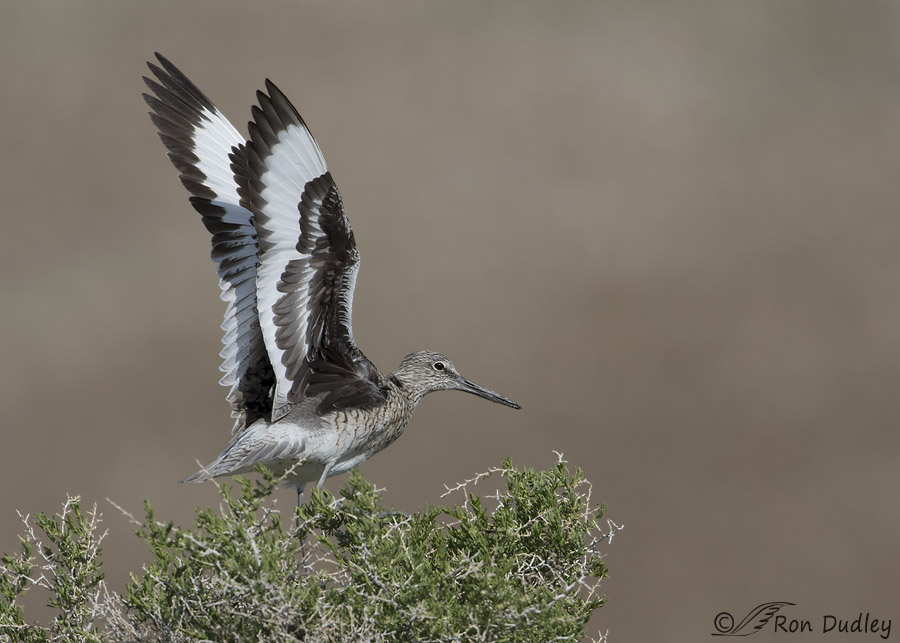I’ve been noticing Willets on Antelope Island for a week now but until yesterday I’ve been unable to get close to any of them.

1/3200, f/6.3, ISO 320, Canon 7D Mark II, Canon EF500mm f/4L IS II USM +1.4 tc, not baited, set up or called in
This bird allowed my first close approach of the season and became an example of one of the instantaneous decisions the bird photographer must make in the field (and this time I made the wrong one). I’d been photographing it for a while when suddenly the bird hunkered down (as you see here) in an obvious fear response to something threatening in the sky. The threat turned out to be an approaching pair of sky-dancing Northern Harriers and one of them was coming in very close. I had to make a snap decision – keep my lens trained on the Willet because it was probably about to take off due to the threat or go for the sky-dancing harriers, a behavior I’ve seldom photographed and never from this close.
I chose the harriers in the sky and as I was attempting to acquire focus on them I heard the Willet give an alarm call and take off. I never did even get my focus locked on to the acrobatic harriers so I struck out completely. Bird photography ain’t easy!
In any plumage Willets are drab and inconspicuous until they raise their wings when they instantly become quite spectacular.

1/3500, f/7.1, ISO 500, Canon 7D Mark II, Canon EF500mm f/4L IS II USM +1.4 tc, not baited, set up or called in
When their wings are raised a bold white wing-stripe suddenly appears across the base of the primaries and secondaries which otherwise are black and set off by black coverts. From below the white stripe also contrasts sharply with the almost black wing-linings. This transformation is startling and quite flashy.
Willets typically flash their wings immediately after landing but that’s not what this bird was doing here (image taken an hour and 17 minutes after the first image and in the same area – possibly the same bird). There was a stiff, cold wind from the north which made the Willet unstable on its precarious perch and it simply raised its wings to maintain balance. It had to do so repeatedly.
Willets are a common species in some areas and many folks don’t pay them much attention. But for me they’re a welcome harbinger of spring and I love watching their interesting behaviors (including spectacular fights – I call them “Willet Wars“) and even listening to their raucous and incessant calls which some find annoying.
They don’t annoy me and I welcome them back.
Ron


Sensational am shots Ron!
Charlotte
What a pretty little bird. Sort of a Cinderella..drab until it has to take off for the ball.
Inconspicuous yes. Drab? Hell no. Muted magic. When you look at the patterns on the plumage it is a subtle beautiful little bird. And in flight a dramatic and beautiful bird.
“Muted magic” works for me, EC. Thank you.
Another surprise: I thought the evil IPad was dead…in the dash to answer a robocall, It had slipped to the floor and when I retrieved it, there was no sign of life…the surprise part is that I actually mourned it!!!!!!! Was about to take it in for repairs(mucho dinero, probably), but daughter said to hold down start button and square button on front for 30 seconds first…it worked!!! The evil iPad LIVES AGAIN to torment me…and I’m genuinely HAPPY!!!!
Wow! What a striking, unexpected display…you never know how Mother Nature us going to surprise you…but, shebwill!!!
“you never know how Mother Nature us going to surprise you”
That’s right, Patty. That’s why it’s so important for me to keep my eye glued to the lens and my finger on the shutter button when I’m in the field. Things like this happen so very quickly with birds.
And congrats on the resurrection of your evil iPad!
Well, Ron – this is another bird I’ve never seen before so I loved the chance to “meet” this one for the 1st time with both views.
Happy to introduce you to them, Jo Ann.
I love watching Willets, and still remember the first time I was able to identify one – because of the wing patterns in flight. I watch them on the Outer Banks all the time, and also enjoy watching their small ‘cousins’, the Sanderlings, who have a similar pattern on their wings.
“I love watching Willets”
Me too, Susan. Their behaviors on the island when they come here to breed are really interesting.
Perfect background to highlight the beautiful wings of the willet. I don’t find them annoying either and enjoy trying to get decent shots of them in flight.
“trying to get decent shots of them in flight.”
“Trying” is the key word here, Dave, at least for me. I don’t think I have any decent full-flight shots of the species. Thank you.